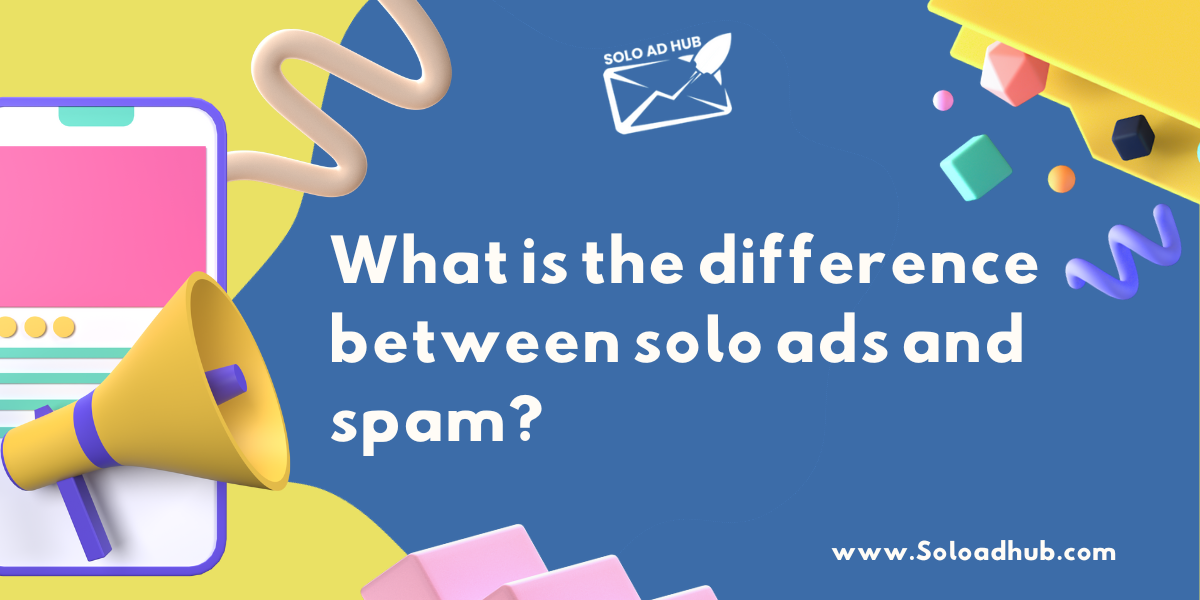Table of Contents
Introduction
In the dynamic landscape of digital marketing, understanding the nuanced differences between solo ads and spam is crucial for businesses aiming to maximize their online presence. This article will delve into the distinctive characteristics of these two marketing strategies, shedding light on how they can either elevate your brand or tarnish its reputation.
Demystifying Solo Ads
Definition and Purpose
Solo ads are a targeted advertising method where a business pays to have its promotional message sent to the email list of another entity. The key differentiator here is the element of consent – recipients willingly subscribe to receive these messages, ensuring a higher likelihood of engagement. This form of advertising aims to reach a specific audience, offering a more personalized approach compared to broader marketing strategies.
Benefits of Solo Ads
- Targeted Reach: Solo ads allow businesses to connect with a precise demographic, ensuring that their message resonates with those most likely to be interested in their products or services.
- Cost-Effective: Compared to traditional advertising methods, solo ads often offer a more cost-effective solution, especially for businesses with a limited marketing budget.
- Quick Results: Solo ads can yield rapid results, making them an ideal choice for businesses looking to boost their online visibility in a short period.
The Dark Side of Spam
Definition and Risks

In stark contrast, spam refers to unsolicited and often irrelevant messages sent in bulk to a vast number of recipients. Unlike solo ads, spam disregards the need for consent, inundating inboxes with information that recipients did not actively seek.
Risks of Spam
- Reputation Damage: Spamming can tarnish a brand’s reputation, as it is often associated with intrusive and unethical practices.
- Legal Consequences: In many jurisdictions, spamming is not just frowned upon; it’s illegal. Businesses engaging in spam risk facing severe legal consequences and fines.
- Low Conversion Rates: Due to the unsolicited nature of spam, it typically has significantly lower conversion rates compared to more targeted marketing methods.
Navigating the Fine Line
Key Distinctions
While solo ads and spam both involve sending messages to a group of recipients, the crucial difference lies in consent and relevance. Solo ads respect the boundaries of permission marketing, ensuring that recipients have expressed interest in receiving such content. This targeted approach establishes a direct line of communication with an audience genuinely interested in your offerings, fostering a more meaningful connection. By respecting user preferences and delivering content aligned with their interests, businesses employing solo ads create a foundation for trust and engagement that goes beyond mere visibility in the digital realm.
Best Practices for Solo Ads
- Build Opt-In Lists: Focus on building opt-in email lists where individuals willingly subscribe to receive your messages.
- Craft Compelling Content: Ensure your ad content is engaging, relevant, and provides value to your audience, fostering a positive brand perception.
- Test and Optimize: Continuously analyze the performance of your solo ads, tweaking strategies to enhance effectiveness and resonance.
Avoiding the Pitfalls of Spam
- Prioritize Consent: Only send marketing messages to individuals who have explicitly consented to receive them.
- Clear Opt-Out Options: Include easy-to-find opt-out options in your emails, respecting users’ preferences and privacy.
- Compliance with Regulations: Stay informed about and adhere to international anti-spam regulations to avoid legal ramifications.
Conclusion
In the ever-evolving digital marketing realm, the distinction between solo ads and spam is pivotal. Implementing targeted and consent-driven strategies, such as solo ads, can significantly enhance a brand’s online presence without compromising its reputation. Conversely, succumbing to spam-like tactics can lead to severe consequences, negatively impacting both brand perception and legal standing.
Remember, success in digital marketing lies not only in reaching your audience but doing so in a manner that respects their preferences and aligns with ethical standards.
